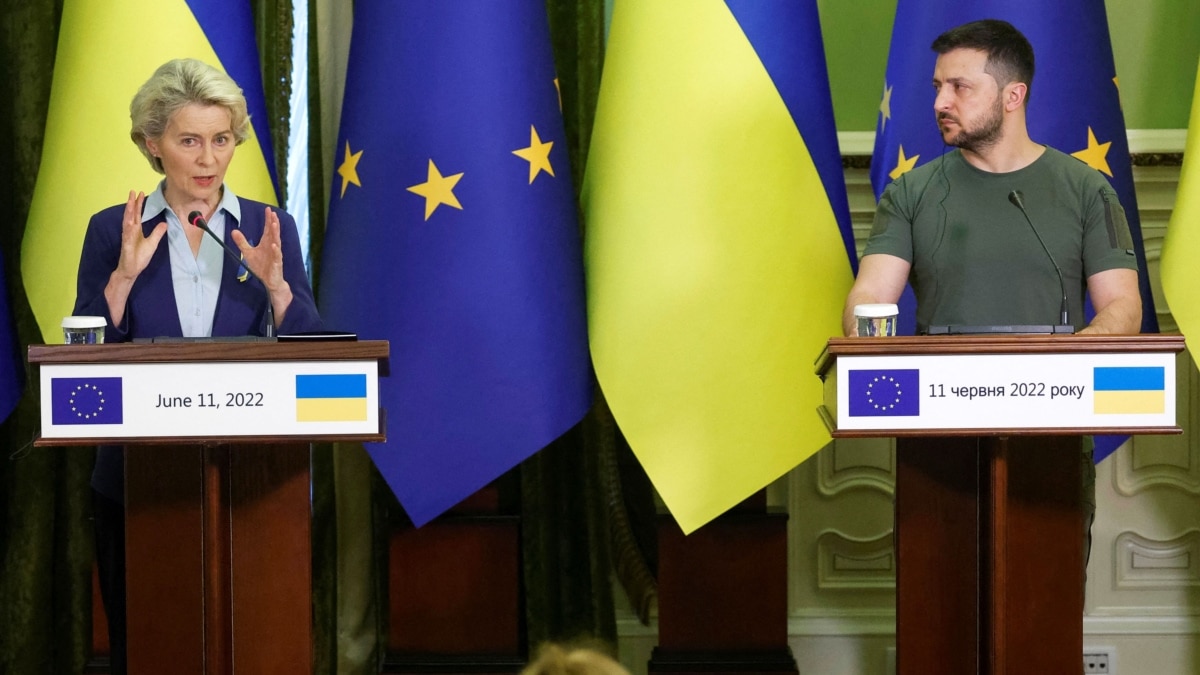Fierce fighting continues in the Donbass, with Ukrainian forces repelling massive bombardments in the key city of Syevyerodonetsk and the nearby region, while Russian forces try to complete the encirclement of the area and cut off defenders and civilians left in the pocket.
This was announced by the British Ministry of Defense in its daily news Notice on June 17 that for the past 24 hours the Russian military had probably continued to try to resume travel on the Popasna axis, some 55 kilometers south of Syevyerodonetsk, from where they are attempting to encircle the city.
This was stated by the General Staff of Ukraine late June 16 Battle It was particularly strong in and around Syevyerodonetsk and Lysychansk, the Ukrainian-held twin cities on opposite banks of the Seversky Donets River.
Live briefing: Russia’s invasion of Ukraine
RFE/RLs live briefing gives you all the key developments on the Russian invasion, how Kyiv fights back, the plight of the civilian population and the western response. Click here to see all of RFE/RL’s coverage of the war here.
Fighting in Syevyerodonetsk has been going on for weeks in a battle that Ukrainian President Volodymyr Zelenskyy says could determine the fate of Donbass.
Moscow would control the entire Luhansk region if its troops managed to capture Syevyerodonetsk and Lysychansk.
The military governor of the eastern Luhansk region, Serhiy Hayday, said about 10,000 civilians out of a pre-war population of 100,000 remain trapped in Syevyerodonetsk as key supplies run out.
Many civilians are sheltering in bunkers under the city’s Azot chemical plant.
Syevyerodonetsk Mayor Oleksandr Stryuk told Ukrainian television on June 16 that about 500 civilians were trapped in shelters at the plant.
The United Nations put the number of civilians still trapped in the city at 12,000.
“There has been fighting and constant shelling there for almost a week,” he said, warning that the shelling could damage ammonia storage facilities and trigger a chemical catastrophe. “It’s a miracle the whole city isn’t affected.”
Across the river in Lysychansk on June 16, an airstrike hit a building housing civilians, killing at least three people and injuring at least seven, according to Hayday.
Ukrainian soldiers managed to repel Russian advances in other areas along the front, while Russian troops in Kharkiv held off Ukrainian troops with the use of artillery.
In the vicinity of Donetsk and Zaporizhia, Russia also carried out attacks to detain Ukrainian troops.
On June 16, Security Council Secretary Oleksiy Danilov raised the possibility of a threat from Belarus on Ukrainian television. At the meeting of officials on June 15, the situation in the neighboring country, the state of the Belarusian army and the number of Russian troops stationed there were discussed.
Danilov said there will be one inspection in four areas to gauge readiness, adding that the issue is “under the President’s control.”
In the north-eastern Sumy region, Russia launched a missile attack that killed four people and wounded six others, Dmytro Zhyvytskiy, head of the Sumy regional administration, told Telegram.
Ukrainian Defense Minister Oleksiy Reznikov, quoted by CNN, said the number of Ukrainians who have died since Russia invaded Ukraine in February is likely in the tens of thousands. Reznikov said he “hopes” the number is under 100,000.
Reznikov and other officials met with the representatives of some 50 countries from the Ukraine Defense Contact Group on June 16 at NATO headquarters in Brussels. The main topic of the meeting was Ukraine’s demand for more heavy weapons.
Great Britain announced that it would provide Ukraine with 20 multiple missile systems. Defense Secretary Ben Wallace confirmed Britain would send the units to Ukraine.
The systems were bought by a Belgian armaments company and are to be handed over straight to Kyiv in addition to “a small number of British Army stockpile rocket-propelled grenade launchers,” the BBC reported.
According to Wallace, in some places Russia has a 20x advantage in artillery over the Ukrainian army.
The June 17 British intelligence bulletin also pointed to disagreements among the Russian public over support for the war.
“Although the majority of Russians tell pollsters that they support the ‘special military operation,’ sections of the population are demonstrating both active and passive resistance,” the report said.
British intelligence also mentioned the existence of a group of Russian recruits called the Freedom for Russia Legion, which “almost certainly served in combat alongside the Ukrainian military”.
Mykhaylo Podolyak, a senior adviser to Zelenskyi, dismissed Russia’s recent comments about its willingness to resume negotiations as an “attempt to deceive the world”.
Russia wants to appear open to talks while planning to stab Ukraine in the back, he said. Kyiv will definitely return to negotiations, but only when the time is right, he added.
Russian President Vladimir Putin, meanwhile, held a phone call with Chinese President Xi Jinping, the second since Russia attacked Ukraine.
China has refused to condemn Moscow’s invasion of Ukraine and is in talks to increase sales of Russian gas.

